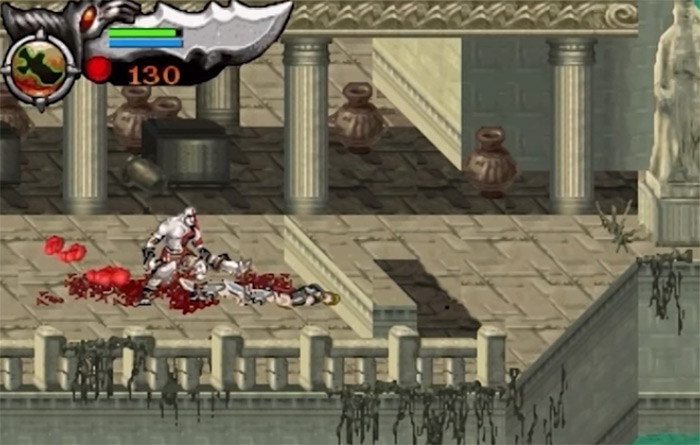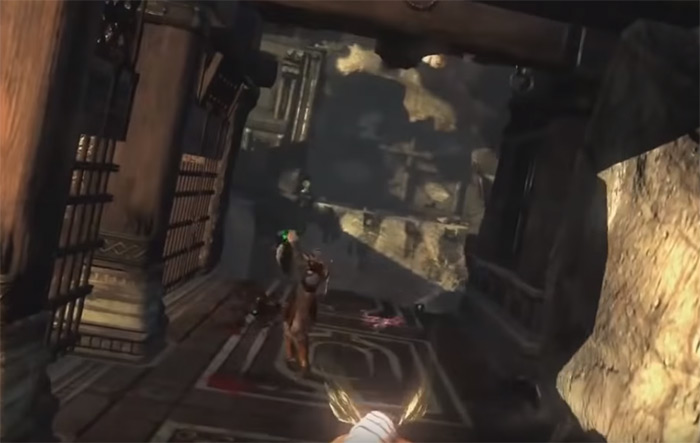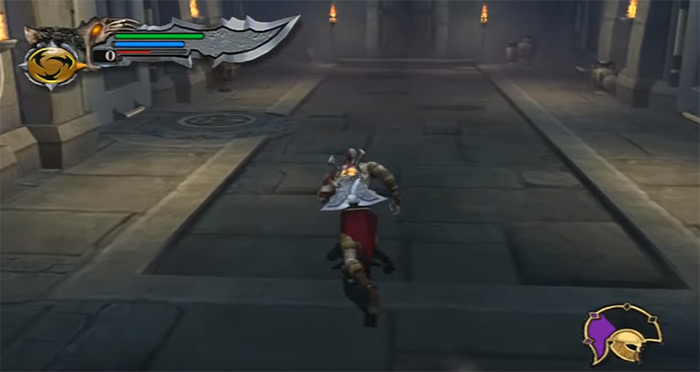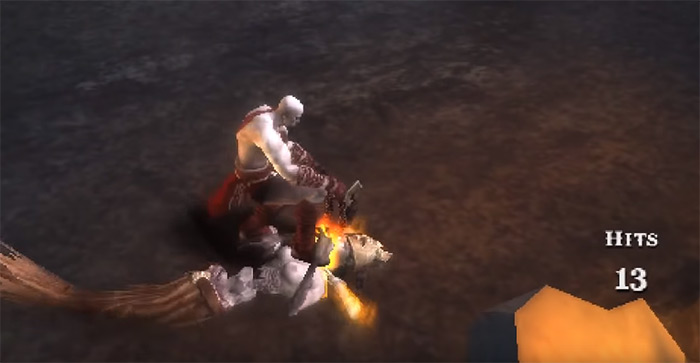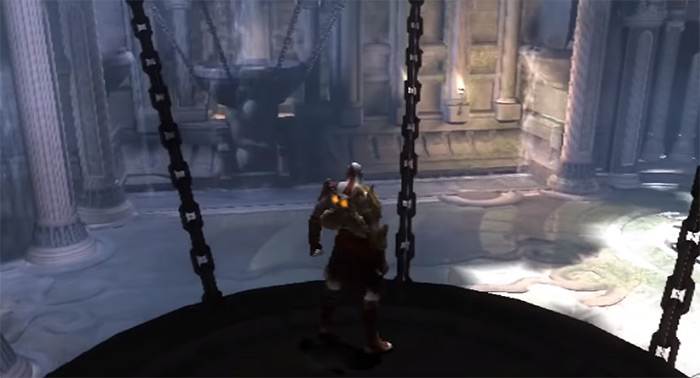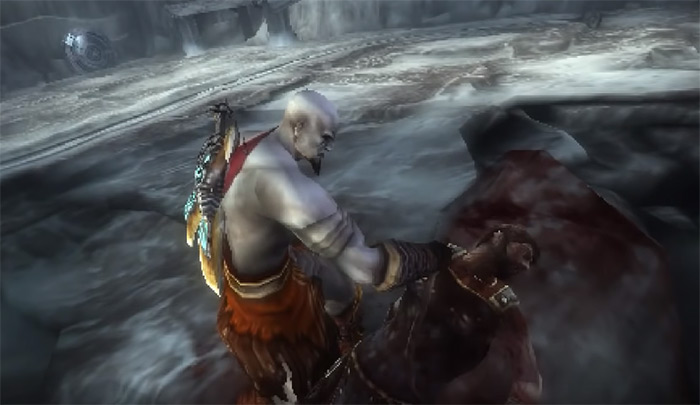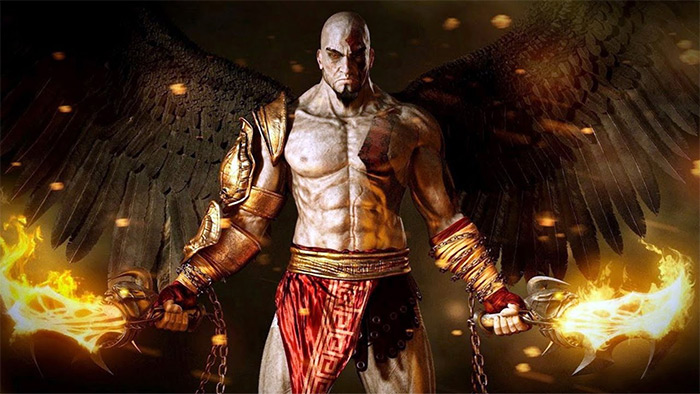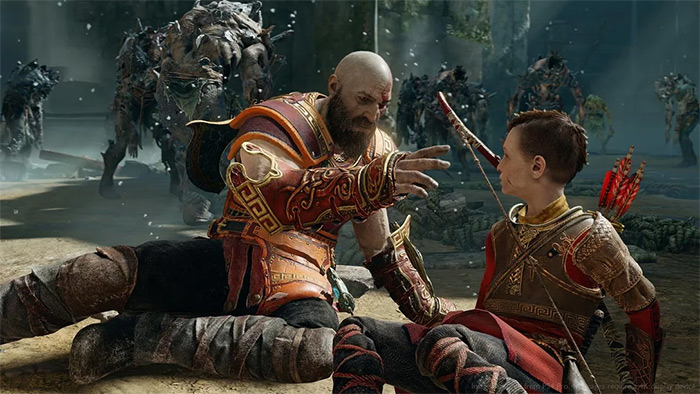Kratos’ struggles against the gods and their creations have shaped the industry and our expectations from the genre. It has an amazing treatment of the source material leaving just enough intact for players to see the resemblance, without letting it get in the way of telling an engaging and compelling story. This has inspired many to follow the formula and create their own masterpieces, such as Asura’s Wrath and Dante’s Inferno. To look back and celebrate the long trajectory of this series, I’ve decided to rank all games in the franchise starting from the worst(which is still pretty good) and working down to the #1 best GoW game. A tough challenge considering the quality these developers have maintained throughout the years! But let’s get into it.
8. God of War: Betrayal (2007)
Knowing where to start the list isn’t too hard. God of War: Betrayal was released for mobile systems back in 2007. Don’t mistake this for a full-fledged modern mobile game. This thing ran on phones before they were considered “smart”! In a way, that actually makes Betrayal an amazing game. Despite the obvious limitations of the systems it ran on, the game maintained the combo system and in general the intense action of the main games. This God of War title also looks amazing with a vibrant color palette and beautiful sprites that make the story come to life. It even featured QTEs! In its time it was definitely a worthy addition to the pantheon of God of War games, and the story provides insight as to why the other Greek gods shun Kratos as they do. That said, it’s still a mobile game in a franchise of full-fledged grand adventures with some serious graphics. So due to this limitation it gets the bottom spot in our ranking.
7. God of War: Ascension (2013)
On the other side of the spectrum we have God of War: Ascension. This is a game that couldn’t live up to its predecessors despite its technical achievements and detailed 3D graphics. The game takes place prior to all other entries in the franchise, as it follows Kratos in his quest to escape the Prison of the Damned and defeat the Furies… the creatures that torture him daily for having broken his blood oath to the original god of war, Ares. The game-play is essentially the same as all games before it. But instead of acquiring more weapons other than the Blades of Chaos as the game progresses, this game features a new system that allows Kratos to pick up weapons such as Javelins and Swords. Neat! You can also imbue the Blades of Chaos with different elemental affinities such as the Fires of Ares or the Ice of Poseidon. Another slight change in the game is that QTEs involve much more involvement from players, as they are less scripted. This would later be emulated by God of War in 2018. Ascension is the only game in the franchise to feature a multiplayer mode too. It includes character progression and different modes such as Capture the Flag and other competitive multiplayer classics. While fun, many players(myself included) feel like the effort put into developing multiplayer could have been destined to crafting a better story or generally a more memorable game. It was a bad idea to release a lackluster game after a masterpiece like God of War III. But at least it served as a wake-up call for the developers and it may have been a deciding factor in them re-imagining the series for their game on the next generation of consoles.
6. God of War (2005)
The first God of War came out on 2005 for the PS2 and it was a complete game-changer. It was a game of incredible quality with carefully crafted levels and a lot of personality that set a very high standards for its many sequels. I mean really, just skim a couple reviews from that time to see what I mean. The narrative focuses on Kratos’ quest to find Pandora’s Box at the behest of Athena. With its power he aims to defeat Ares, his former mentor who tricked him into killing his own family to turn him into the definitive human weapon. Yeah it’s dark. It ends with Kratos’ triumph over Ares and his ascent to divinity as the new god of war. The concept was very interesting in a time where there weren’t that many “historical” series like Assassin’s Creed. And while God of War isn’t historical in a realist sense, it does take inspiration from some very ancient material and folklore. In a way, ancient Greek myth was the perfect setting for a game filled to the brim with over-the-top violence. The gameplay is also polished and fluid with combat featuring flashy combos, grabs, and numerous QTE sequences that have remained an important aspect of the series to this day. It’s not only about fighting, however, as the game has many platforming and puzzle-solving sections that serve as a change of pace between battles. The soundtrack used Greek instruments to create distinctive orchestral pieces rather than just trying to fill the void with action scene music. This plays a big role in bringing the world to life and making the player feel immersed in the story. God of War was released to universal acclaim and won many awards and accolades. The only reason this game isn’t higher on the list is that Santa Monica actually managed to keep upping the ante on almost every new release.
5. God of War: Chains of Olympus (2008)
One of Santa Monica’s greatest achievements has been taking the essence of the full console game to handhelds without losing any quality. God of War: Chains of Olympus came out for the PSP in 2008 and offered a fully fleshed-out experience in terms of game-play, narrative, and even graphics despite the limited hardware. The story follows Kratos during his ten years of service to the gods, before the first game. The plotline shows Kratos as he thwarts a plan concocted by Persephone, Morpheus, and the titan Atlas to destroy the pillar that supports the world and destroy Olympus. Most developers are perfectly fine with delivering a shrunken-down product when taking a franchise to a handheld for the first time. Best case scenario, they just go for another genre which I personally believe to be a better choice than the former. The God of War dev team, however, pushed the PSP to the limit and did something impossible for lesser studios: they kept the same formula and improved upon it. On a mobile console! To this day, it remains one of the best PSP games ever released. Literally the 7th highest selling PSP game of all time.
4. God of War II (2007)
The second installment in the main console series came out for the PS2, same as the original release. It follows Kratos as he’s betrayed by Zeus and a pantheon of gods who’d grown wary of his power and attitude. He’s stripped of his godly powers and sent to the Underworld where the titan Gaia finds him and sets him on his way to find the Sisters of Fate… So with them he can change his destiny. In the end he succeeds, traveling back in time to before he was betrayed, but fails at killing Zeus as Athena sacrifices herself to stop him. The game takes everything that made the original good and turns it up a notch. This means updated graphics and improved effects, even on the same hardware as the first game. The Blades of Athena are one of the flashiest-looking versions of Kratos’ chained weapon. And this game introduces the Typhon’s Bane, a bow and arrow that enable him to attack at a distance. Magic is also much more integral to combat in this installment. However what really makes the game shine is the fact that there are more bosses, some of the hardest puzzles in the franchise, and scenes of insane scale right from the beginning with Kratos battling the Colossus at Rhodes. The soundtrack is similar to that of the first game but it’s geared towards accompanying the action rather than being just several good standalone pieces.
3. God of War: Ghost of Sparta (2010)
The second coming of Kratos to Sony’s handheld console was no less amazing than the previous one. Kratos’ model looks so good it’s hard to believe. The colors are vibrant and overall the game just looks amazing. The graphics and effects on this thing are much better than the first game, and some even say it looks better than GoW II. The story takes an interesting turn here as Kratos decides to explore his origins and eventually rescue his brother, Deimos, who was kidnapped during their childhood at the behest of Zeus for having birthmarks that closely resembled those of the “marked warrior” prophesized to kill him. It gets kinda crazy here and some fans have mixed feelings on this part of the story; others love it. In fact, Kratos got his red tattoo in honor of his brother who dies at the end of Ghost of Sparta, prompting the Spartan to finally decide that the gods have overstayed their welcome in the land of the living. Another thing worthy of mentioning is the inclusion of the Arms of Sparta, a new weapon for Kratos from his days as a Spartan soldier. They allow him to block, attack at a distance, and get up close and personal with his foes. This weapon provides an all-in-one package much like the Leviathan Axe in the latest game. This bad boy is very fun to use and at the time of this game’s release it really added a new dimension to the tried & true formula.
2. God of War III (2010)
God of War III was one of the flagship titles for the PS3. As such, it got a lot of people into the franchise. The graphics, for one, were amazing. They really took advantage of what the hardware could do and making the action on screen look much more real, along with the gore. Thanks to its fluid movements and greatly improved graphics, it was the first game in the series that wouldn’t constantly remind you it was a videogame. Immersion in GoW III can be absolute. It starts with Kratos and the Titans attacking Olympus. They’re pushed back by Zeus, and Kratos falls to the Underworld and into the river Styx where he’s stripped of his godly powers. From there he goes on a rampage through the Greek world retrieving his powers and murdering every god he comes across until he finally manages to defeat and kill Zeus, in a scene nobody can ever forget. Santa Monica Studios did it again with God of War III, providing fans with the ultimate classic God of War experience(including the PS4 remaster). Along with the graphics, combat was greatly improved with many new and unique weapons and more varied enemies to use them against. The boss fights in this game are just amazing, both in quality and in their titanic scale. And each song in the soundtrack seems custom made for the scenes it accompanies. Battles, bosses, and boisterous music. What more could you ask for? For a long while, God of War III was unbeatable. After following Kratos as he completely destroyed the world, what could possibly compete? God of War: Ascension clearly didn’t. For a little while it seemed like the franchise had seen its peak. That is, until…
1. God of War (2018)
Abandoning the now-defunct world of Greek myth, Kratos now finds himself in Midgard, one of the Nine Realms of Norse mythology. Instead of dealing with nightmares of his past and his hate against the gods, he must now deal with trying to be a good father for a son who just lost his mother. Taking a hint from several successful franchises in recent years, the developers made the game much more about exploring and telling a compelling story than it is about platforming or killing hordes of enemies. There are still many epic fights in this too. Don’t let the seemingly sims-style plot fool you. But the game shies a bit away from the gratuitous violence of its predecessors, even treating scenes where Kratos bathes in blood as something notorious rather than something that happens every couple of minutes. From a technical perspective, the game features amazing graphics and beautiful landscapes… to be expected if you compare all their other entries. The whole game is done in a one-shot style with a camera hovering over Kratos’ shoulder, only moving around when cut-scenes require it. The new camerawork goes well with the game’s souls-like combat where timing and planning are key, and everything ends up feeling very cinematic. Almost like a video game had a baby with a movie director. The latest installment in the God of War franchise is the result of Santa Monica understanding they needed to change some things to remain at the vanguard of modern action gaming. And from what I’ve seen playing this game(among other people’s opinions) I think it worked. The story becomes more nuanced and mature, and game-play becomes slower and more technical. It’s quite a bit different than the very first game that started it all, but it’s also an incredible experience in its own right. The change of setting brings with it a change in style and new possibilities for the future.
